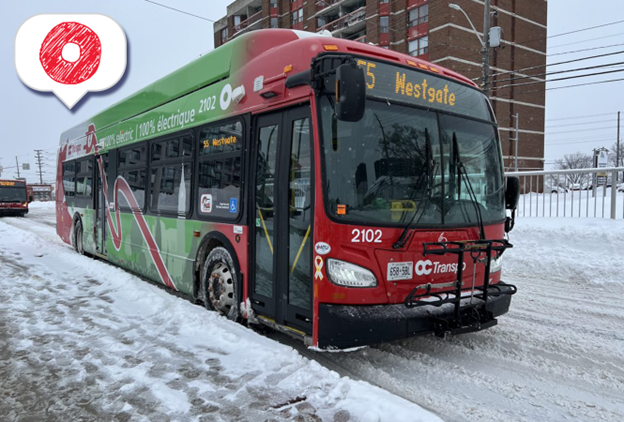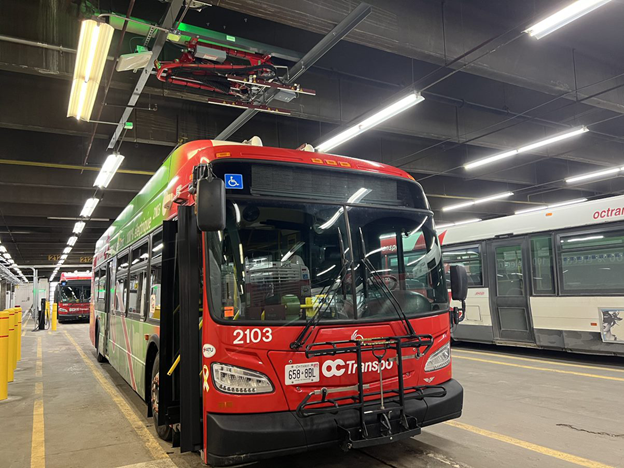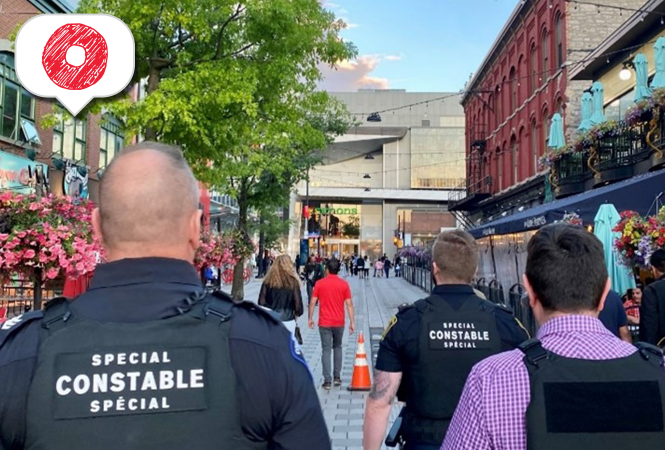OC Explained: Zero Emission Bus Program

Zero Emission Bus on the streets of Ottawa (January 2023)
Less greenhouse gas emissions, same great service and lower operating costs.
Sounds good, doesn’t it?
That’s exactly what OC Transpo is working toward as we transition our bus fleet from diesel to electric by 2036.
This is an important transition and we’re excited to tell you more about it.
Meet our Zero Emission Buses
We have four 40-foot New Flyer XE40 battery-electric buses. These buses were launched in 2022 as part of a pilot project. They have met our expectations and have been resilient in all weather conditions. Four battery electric buses have been in service since February 2022 and are approaching 500,000 kilometres on the road. The vehicles have been performing successfully on routes longer than 10 hours and driving distances exceeding 200 kilometres on a regular basis. Since 2022, OC Transpo has also seen a fuel savings of 25,000 litres per bus, per year.
Before our new buses hit the streets, we retrofitted one of our garages to house, charge, and maintain the vehicles. We charge our buses using an overhead pantograph. The pantograph is attached to the roof of the garage and is protected from wind, rain, snow and ice.

Zero Emission Bus
How are we paying for these buses?
In June 2021, Ottawa City Council directed staff to purchase ZEBs for all future transit bus fleet needs, as long as the buses meet the City’s operational needs and are affordable.
Due to generous support from the Government of Canada, OC Transpo is able to buy ZEBs at the same price of what a diesel bus would cost.
Electric buses are purchased with a combination of City funds, a $380 million loan from Canada Infrastructure Bank (CIB) and a $350 million grant from Infrastructure Canada. The City will contribute what normally would be spent on a diesel bus, with CIB and INFC providing money to cover the extra cost of the electric bus.
As part of the agreement with CIB, loan repayment will only come from OC Transpo’s actual energy and maintenance cost savings achieved over the life of the zero-emission buses. This ensures that loan repayment comes only from real savings achieved.
For a detailed explanation of how we are working with our funding partners, watch our Transit Commission update.
What can you expect next?
As our diesel buses near their end of life, we plan to gradually replace them with electric buses. Here is how many e-buses we are expecting to be delivered over the next four years:
- 26 in 2024
- 76 in 2025
- 110 in 2026
- 136 in late 2026
Moving forward, we will make requests for ZEB purchases as part of the City’s annual budget approval process.
Retrofit work continues at our St. Laurent garage to accommodate the new electrical infrastructure and a new covered parking garage. When complete, our south garage will have the capacity to park and charge 143 electric buses. The north garage retrofit is scheduled for completion in late 2025 and will have the capacity to park and charge 93 electric buses. The new parking garage is scheduled to be completed in 2027 and will be able to park 84 electric buses.
Electrification of OC Transpo
When talking about the importance of going green, our ZEB fleet will join OC Transpo’s fully electric O-Train Line 1 light rail transit (LRT) system in helping reduce our city’s GHG emissions.
Launched in 2019, O-Train Line 1 offers customers a 12.5-km fully electric light-rail service between Tunney’s Pasture and Blair Stations from the west to the east of the city. The system can accommodate 10,700 passengers per hour, and travels end-to-end in less than 25 minutes. Work is currently underway to expand our O-Train system by adding an extension to the south, east, and west. Visit the project website to learn more.
We all envision a more green, clean, and sustainable earth – and OC Transpo is doing its part to help make that a reality.

